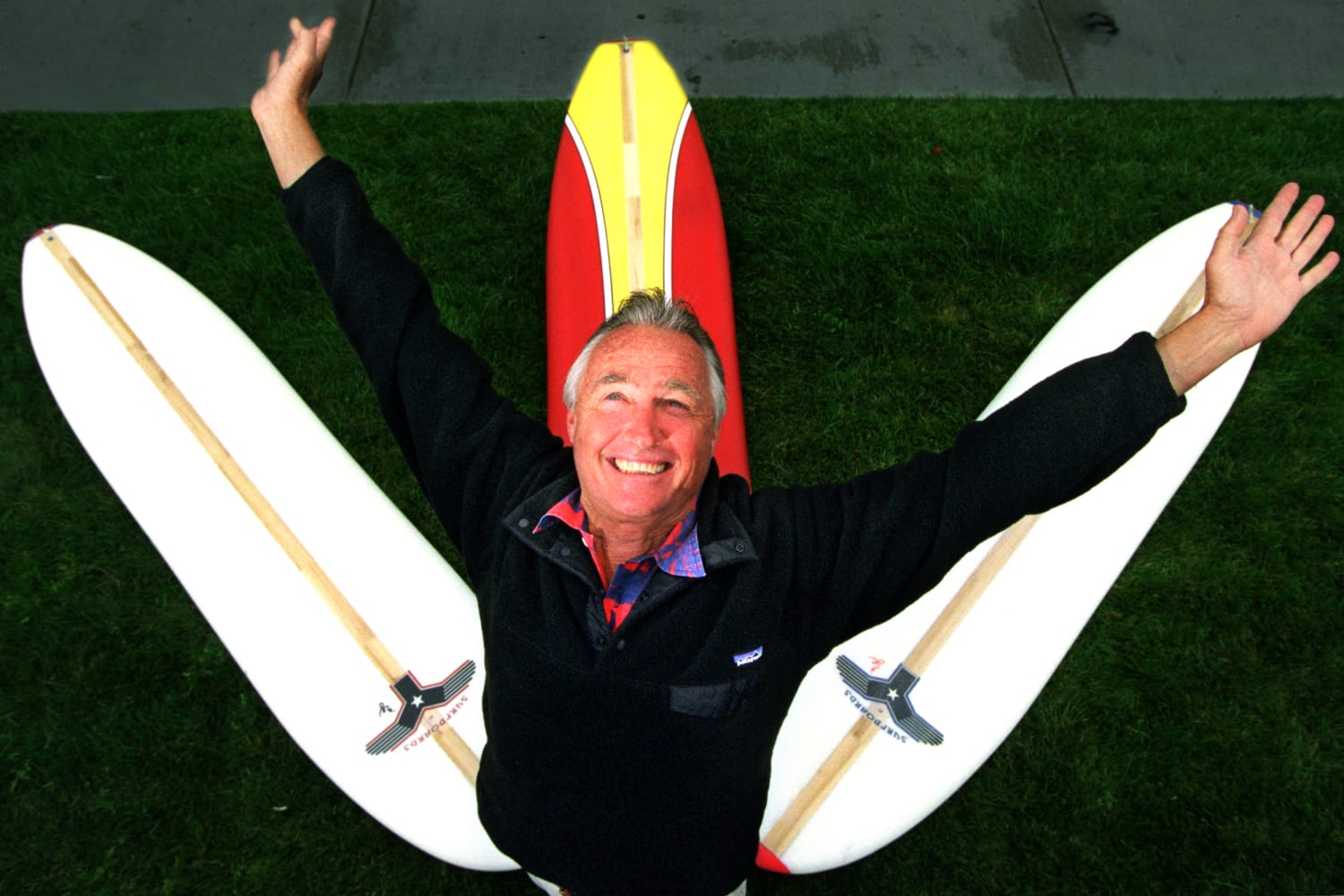Surfing legend Tom Morey, creator of the Boogie Board, has died. He was 86.
The California Surf Museum in Oceanside said in a published tribute that Morey died last week at Saddleback Medical Center in Laguna Hills. Writing on Facebook, his son Sol asked for “good vibes” for his dad Oct. 12 before announcing his death two days later.
According to Sol, Marchia Morey and Tom said in a farewell statement: “Thanks to all the millions of people who have embraced the sister-brotherhood of Mother Ocean Waves. You all have made this world a better place.”
Morey died the week after the Oceanside City Council recognized 2021 as the 50th year since the Boogie Board was invented. He was on hand to accept a proclamation.
Morey’s parents moved from Detroit, where he was born, to the Laguna Beach area when he was 8, and he became not only an avid surfer, but also a good one, enjoying sponsorship by the noted board maker Dewey Weber.
He studied math at the University of Southern California, joined the National Guard and then got a job as a composite engineer at the defense contractor Douglas Aircraft, where he got to know jet-age materials.
He experimented with surfboard design, and as part of his first company, Morey-Pope, founded with friend Kar Pope, he helped create a short-lived folding surfboard for travel. He organized a contest called the International Nose Riding Championships in the city of Ventura.
In 1971, after moving to Hawaii, he experimented with soft foam and carved out a board intended for surfing while prone. It looked a little like a kneeboard, a shorter version of the surfboard, but it was something entirely new, especially because it was soft.
Morey initially called it S.N.A.K.E. for side, navel, arm, knee, elbow.
But, inspired by his nights playing ukulele, drums and guitar with the likes of Dizzy Gillespie, Stu Williamson, Bud Shank and Conte Condoli, according to the California Surf Museum, he settled on Boogie.
Morey signed a deal with Gordon & Smith surfboards, and the board was initially produced in San Diego County and Mexico.
Years later he sold the Morey Boogie name and concept to a San Francisco company, and it eventually ended up as the province of Los Angeles-area toy maker Wham-O, home of Frisbee and Hula Hoop.
The floodgates of postwar surfing were opened by Hollywood’s early ’60s infatuation and by the lighter, more maneuverable boards of Bob Simmons and Hobie Alter, but Morey’s bodyboard was on another plane.
It required few of surfing’s ocean skills, and balance on one’s feet wasn’t an issue. It could be tossed into whitewater for an instant ride. And it was relatively cheap: Alter initially sold it for $37.
Generations of Southern California surfers, who often deride bodyboarders as “spongers,” got their first taste of wave-riding on a drug store-bought bodyboard when they were children.
During the City Council presentation Oct. 6, Mayor Esther Sanchez, standing near Morey’s first prototype, said: “I’m sure all of us have used [one], even me.
“That just opened up the world of surfing to everyone,” she said, “and has for 50 years, believe it or not.”
Source: | This article originally belongs to Nbcnews.com











